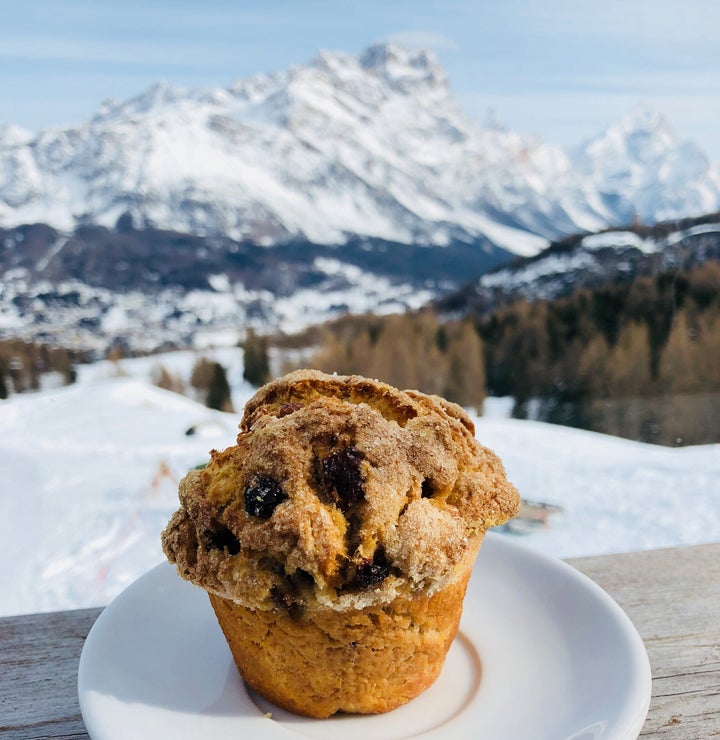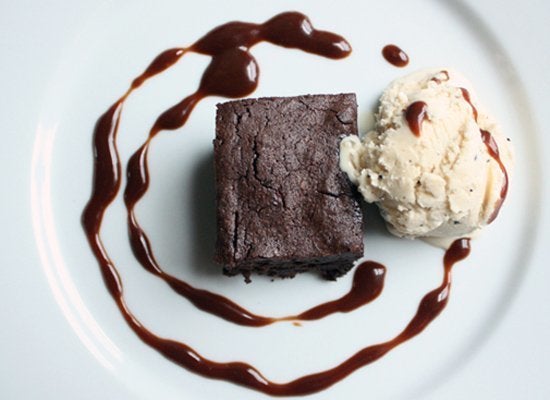For most of us, following a cake recipe to a tee is hard enough — getting butter to the perfect temperature, beating the batter enough but not too much, setting the oven to exactly the right temperature, and waiting what seems like forever for your cake to cool before you frost it. But anyone who lives 3,000 feet above sea level or higher knows that altitude throws a huge new wrench into baking, forcing you to adjust most recipes before you even start.
If you’ve ever wondered why this is, or what to do about it, here’s what you need to know.

At high altitude, water boils at a lower temperature and moisture evaporates quicker.
According to the USDA, a third of the U.S. population lives at high altitude, defined at 3,000 feet above sea level or higher. Even at 2,000 feet, though, cooking times and temperatures might be affected. The higher you get, the lower the atmospheric pressure is due to a thinner blanket of air above. Because of this, water and other liquids will boil at lower temperatures.
“It’s all about air pressure, which has a direct influence on the boiling point of water (or what we can call ‘vapor pressure’),” said Dr. Craig F. Morris, director of the USDA ARS Western Wheat Quality Laboratory at Washington State University. “For every 500-foot increase in altitude, the boiling point of water drops by 0.9 degrees Fahrenheit,” he told HuffPost. Since the boiling point of water is 212 F (100 Celsius) at sea level, water boils at closer to 206 F (96.7 C) at 3,000 feet above sea level.
Liquids can’t get hotter than their boiling point without turning from liquid to gas (steam).
How does this affect baking? Well, recipes will take longer to cook at this lower temperature. More importantly, moisture evaporates at a lower temperature, potentially leaving your baked goods dry.
Gases expand quicker at altitude, which changes the way leaveners work in baking.
Leaveners — yeast, baking powder, baking soda — are what turn doughs and batters into soft, airy baked goods. Essentially, they cause gases to expand during baking. Morris explained that as you get to higher altitudes, the gas expands more quickly.
To combat this, Morris said, “you reduce baking powder, sugar and yeast, and increase the amount of liquid and oven temperature” as you get higher in altitude.
Particularly if you’re making muffins, cakes or anything with a wet batter, do the following: decrease your baking powder or soda by 20 percent at 3,000 feet elevation, and by 50 percent at 5,000 feet or higher, and increase liquid by one to two tablespoons per 1,000 feet, said Dean Folkvord, owner of Wheat Montana Farms and Bakery.
If you’re baking bread, make sure not to over-proof your dough.
With yeasted bread dough, the gas expansion happens mostly before baking, when the dough is left to rise, or “proof.” Your dough will proof more quickly at higher altitudes, which isn’t necessarily a good thing — the gluten needs time to relax, and the flavors need time to develop.
To combat this, you should decrease the amount of yeast you use by 25 percent when baking at altitudes higher than 3,000 feet, Folkvord said. You should also increase the amount of liquid in your dough by one to two tablespoons per 1,000 feet of elevation, to combat quicker moisture loss.
This may take some trial and error, but you should increase oven temperature and decrease cooking time.
A good rule of thumb, said Folkvord, is to increase oven temperatures by 15 to 25 degrees F during baking (the higher you are, the higher your temperature will be), and decrease your baking time by 20 to 30 percent (the higher you are, the shorter your baking time will be). Too long in the oven, and the gases in your baked goods will expand so much that they’ll cause the finished product to collapse, and so much liquid will evaporate that the end result will be dry.
When in doubt, find a recipe specifically written for high altitudes. “High Altitude Baking” and “Pie in the Sky” are both worth the investment if you live at elevation.
